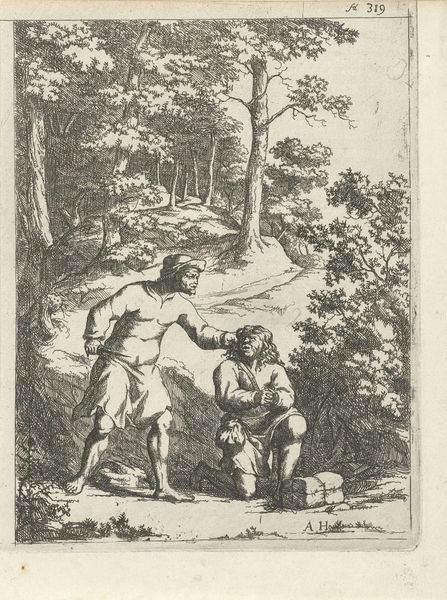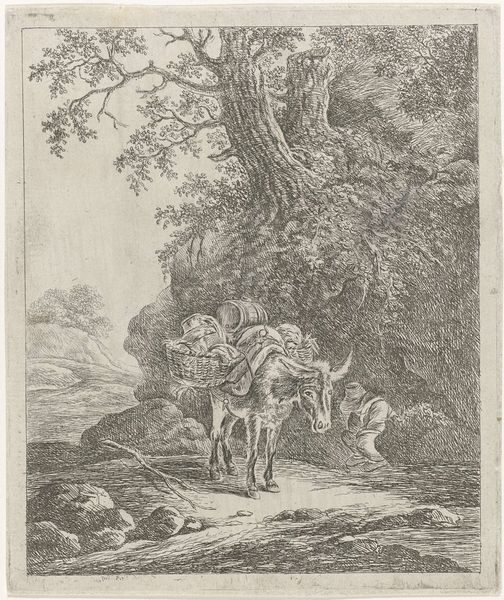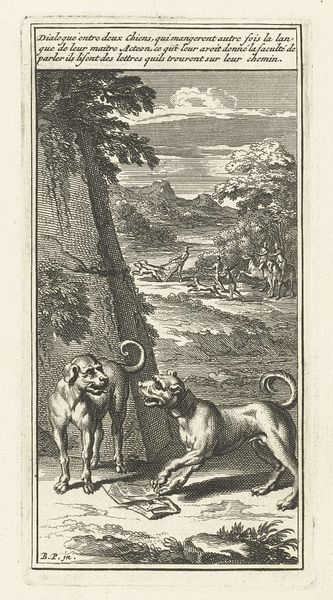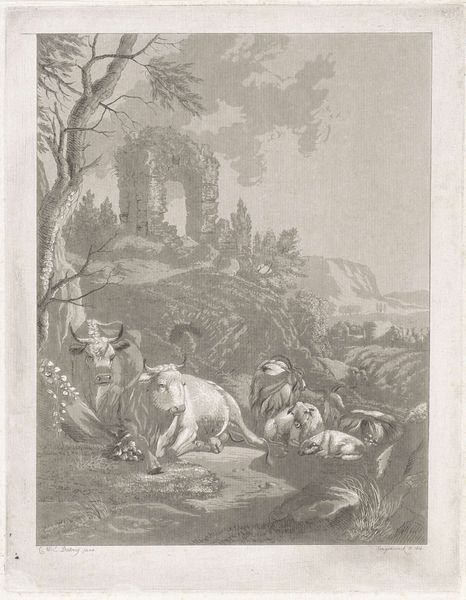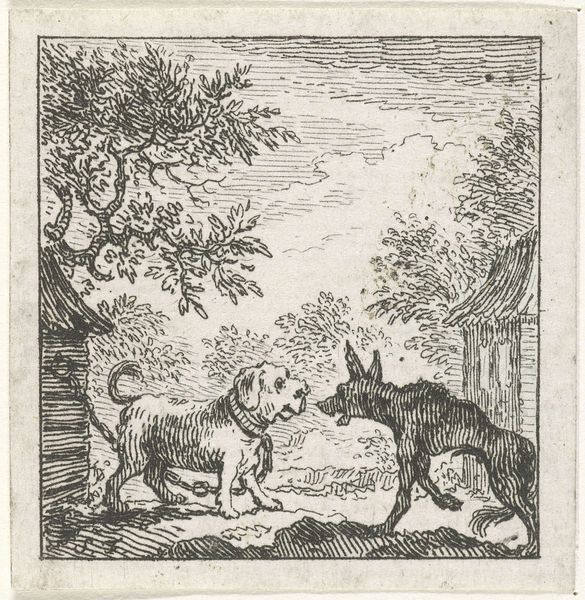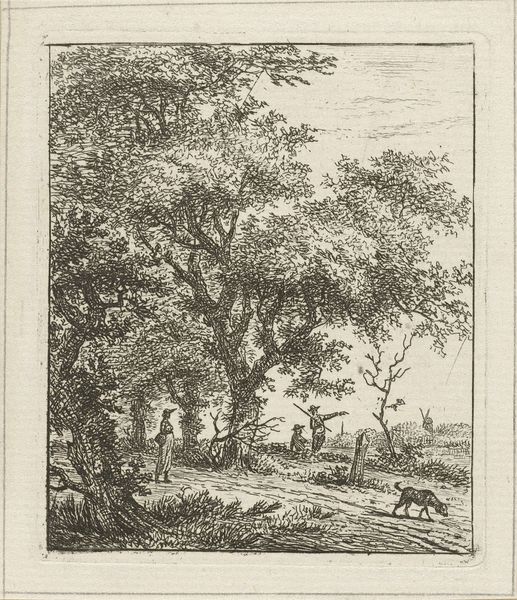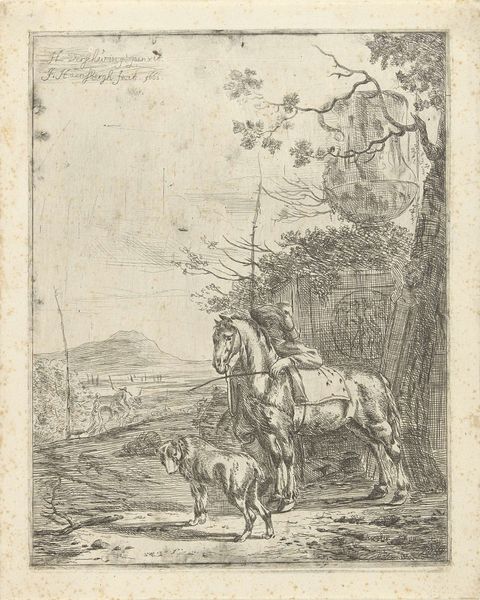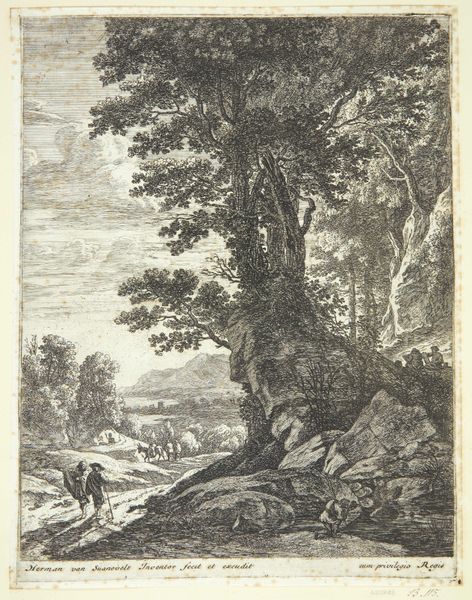
engraving
#
animal
#
pen sketch
#
pencil sketch
#
dog
#
old engraving style
#
landscape
#
genre-painting
#
engraving
#
rococo
Dimensions: height 132 mm, width 84 mm
Copyright: Rijks Museum: Open Domain
Jan Punt etched this landscape with a wolf and a dog in 1788. It presents a deceptively simple scene, but consider the cultural context in which it was made. The Netherlands in the late 18th century was a society deeply invested in moral and philosophical debates, often expressed through animal allegories. The wolf, traditionally a symbol of wilderness and untamed nature, is juxtaposed with the domesticated dog. This speaks to broader Enlightenment discussions about the balance between natural instincts and societal norms. The image creates meaning through its visual codes, referencing the prevailing social structures of the time. The wild wolf, though perhaps free, is also vulnerable. The dog has traded freedom for safety and comfort. Was Punt, through this fable, critiquing the comforts of bourgeois life or warning against the dangers of straying too far from societal expectations? To fully understand this piece, we delve into the literature and philosophy popular during Punt’s time. The meaning of art is always contingent on its social and institutional context.
Comments
No comments
Be the first to comment and join the conversation on the ultimate creative platform.
